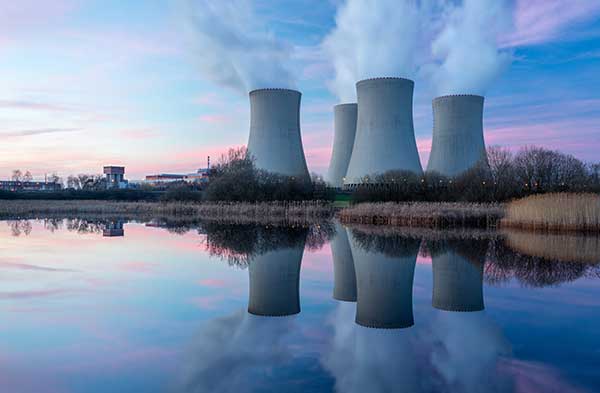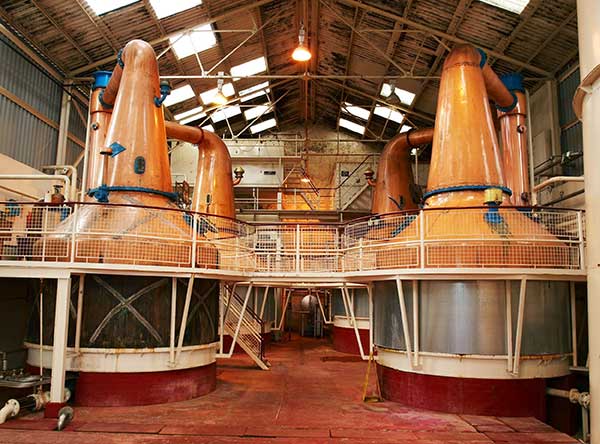In this week’s review of energy news, China plans to increase its nuclear energy capacity as the only viable way to achieve its emissions-reduction targets despite its controversial nature. At the same time, the U.S. continues to pour millions into new and cutting-edge technologies that can help the country transition to low-carbon and clean energy.
China Looking To Accelerate Development of Nuclear Power
At China’s annual parliament session the government disclosed plans to develop nuclear power as a green energy source to reduce carbon emissions and meet its climate change commitments.
China hopes to become carbon neutral by 2060 and wants to install 70 gigawatts of nuclear power by 2025 to help it reach that goal. Efforts will also be made to step up work on China’s homegrown nuclear reactor, the Hualong One.
It is the first time in 10 years that the Chinese government has spoken about scaling up nuclear energy use. Since the March 2011 Fukushima disaster in Japan, there has been a significant decline in approvals for new nuclear power plants in China.
In response to the news, nuclear companies on China’s stock market saw a large movement upward in their share prices, despite an overall decline in the domestic stock market that day.
Hudson Valley Clean Energy Transmission Project Begins
A new “energy superhighway” is being built in Hudson Valley between Dutchess County and Rensselaer County at a cost of $530 million.
According to New York Governor Andrew Cuomo, the project will improve electricity transmission across the state while making it easier to transmit renewable energy.
Cuomo said this is in keeping with New York’s goal of a zero-emissions electricity sector by 2040.
The transmission project is expected to improve the resilience of New York’s electricity grid, including its capacity to withstand storms. It involves upgrading or replacing electricity infrastructure that is currently 80 years old. New York Transco is responsible for the project and expects the upgraded transmission infrastructure to be in use by the end of 2023.
DOE Giving $115 Million To Small Clean Tech Companies
Small businesses that have already begun work on clean energy research and development projects can apply for funding from the Department of Energy to move their projects forward through prototype development.
The DOE said the fund specifically targets small businesses as the backbone of communities and the primary source of employment.
The funds will provide seed money to small businesses working on grid modernization, carbon removal, and renewable energy research and development projects. This funding will go toward helping them to deploy and commercialize their innovations.
Hydrogen Set To Become New Fuel for Highland Whisky Distillers
Whisky distillers in the Scottish Highlands are part of a project feasibility study that seeks to create a green hydrogen hub in Scotland’s Cromarthy Firth.
The distillers — Glenmorangie, Whyte and Mackay, and Diageo — are working along with the Port of Cromarthy Firth and energy firms on a proposal to create an alternative to fossil fuel for use in their factories. The project would use the extensive wind power generated by the area’s huge offshore and inland wind farms to produce green hydrogen, which can then be used as fuel.
Known as the North of Scotland Hydrogen Program, the project is expected to commence operations in 2023. It hopes to make the Scottish Highlands a regional center for the clean energy technology, and there are plans to export green hydrogen to other parts of the U.K. and Europe while scaling up wind power generation capacity.
Schlumberger, Chevron Cooperate With Microsoft on Bioenergy
Microsoft will be collaborating on a proposed project for turning agricultural waste into a renewable synthetic gas that will be used for electricity production.
The project designed by oil major Chevron and Schlumberger New Energy is considered groundbreaking. Annually, the carbon capture and sequestration technology will turn 200,000 tons of agricultural waste from California’s Central Valley into renewable energy. The carbon dioxide produced during the process will be stored permanently underground, resulting in net carbon negative emissions.
The process is expected to remove 300,000 tons of carbon dioxide annually and is designed to operate without nitrous oxide and carbon monoxide emissions typical in biomass operations.
The project will also reduce the amount of agricultural waste that needs to be burned in the Valley and so is expected to improve the region’s air quality.
FedEx Works Toward Carbon Neutrality by 2040
FedEx announced it will replace all of its parcel delivery vehicles with electric vehicles as one step toward its goal of being carbon neutral by 2040.
It is also investing $100 million in a carbon capture research center at Yale University with a view to offsetting the greenhouse gas emissions from its fleet of 680 cargo planes.
This investment is part of an overall $2 billion investment the company is making in pursuit of sustainable energy initiatives.
The company has also upgraded its facilities to increase energy efficiency and has worked with customers to transition to carbon-neutral packaging. It has reduced its aircraft fuel consumption, saving more than a billion gallons of jet fuel since 2012.
Canada Explores Geothermal Energy in the Yukon
The Canadian government is working with three of Canada’s First Nations communities to explore the potential for geothermal energy projects in the northwestern territory of Yukon.
The government has provided initial funding of CA$2 million to explore the potential of geothermal energy as a long-term alternative energy source for communities currently using diesel. Exploratory work will involve drilling temperature gradient wells in areas that show strong geothermal potential, as well as looking for other suitable sites where such wells can be dug.
The project is in keeping with Canada’s goal of meeting net-zero greenhouse gas emissions by 2050 and is part of a CA$200 million national program to encourage commercially viable renewable energy sources for electricity.
Geothermal energy supplies developed in the Yukon project will be used to help provide electricity to remote and northern communities.
Russia Invests in Solar Power Plant
A European energy company has joined forces with the Russian Direct Investment Fund (RDIF) to build a 116-megawatt capacity solar plant in the Southern Russian republic of Kalmykia.
Fortum, a European energy company known for producing energy with zero carbon emissions, has entered into a joint venture agreement with the RDIF to build Russia’s largest solar energy facility.
In its initial stages, the solar power plant will provide electricity only to the wholesale electricity and capacity market but is expected to become fully operational in 2022.
Fortum already operates wind power plants in Russia’s Ulyanovsk and Rostov regions.
The Kalmykia plant will make significant use of Russian equipment in keeping with the country’s desire to make a major contribution to sustainable energy development. Russia is expecting to see major growth in its renewable energy sector.
McKinsey Acquires Sustainability Consultancy Firm
Top U.K. consultancy firm McKinsey & Co. has just strengthened its climate change expertise through the acquisition of Vivid Economics, a leading sustainability economics consulting firm.
The acquisition brings to McKinsey 130 additional consultants and staff who have expertise and experience in net-zero transitions, climate resilience, renewable energy, and carbon markets.
McKinsey said the transition will help its clients better prepare for the transition toward more sustainable business practices, for which the majority are still unprepared.
The firm has also acquired the Vivid Economics subsidiary Planetrics that provides data analytics services for managing climate risks.
Scientists Trial Drones for Siting Renewable Energy Projects
Scientists at the University of the Highlands and Islands are leading trials to use drones to determine the best sites for offshore renewable energy in Scotland and Wales.
The drones will film the movement of water at offshore sites, and the footage will be analyzed by scientists to measure the flow speed and movement of water at those sites.
This information will allow for better siting of underwater tidal stream turbines. Currently, such measurements are done using survey vessels and seabed sensors, which are very costly.
Europe currently has 10.1 megawatts of tidal stream installations and 1.1 megawatts of wave energy.
Though marine technologies for renewable energy are seen as holding great potential, only 260 kilowatts of tidal stream energy and 200 kilowatts of wave energy were installed in Europe last year.
The European Commission wants to see about 1 gigawatt of ocean energy technologies installed by 2030.
Opinion writer: Jewel Fraser
The opinions, beliefs, and viewpoints expressed by the various authors do not necessarily reflect the opinions, beliefs, or viewpoints of Interactive Energy Group, LLC (IEG) or its parent companies or affiliates and may have been created by a third party contracted by IEG. Any content provided by the bloggers or authors are of their opinion and are not intended to malign any individual, organization, company, group, or anyone or anything.
Brought to you by energysavings.com
All images licensed from Adobe Stock.



